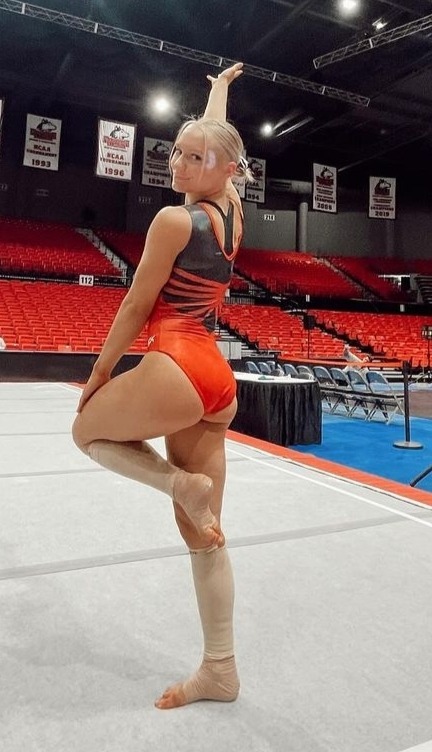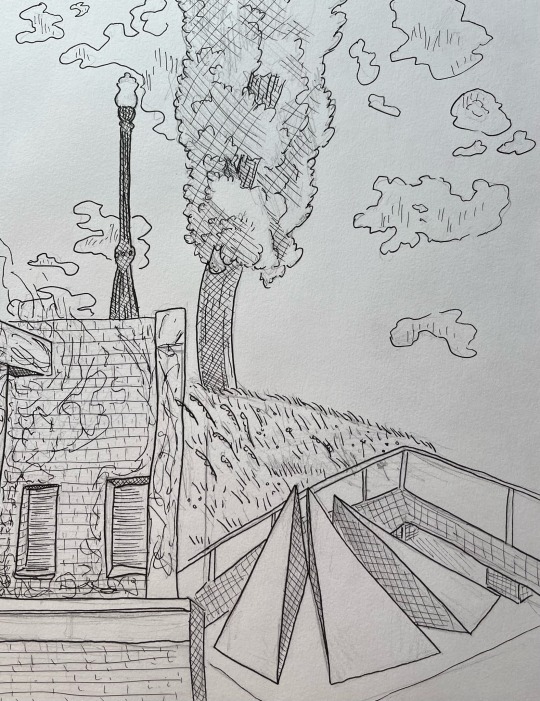#Northern Illinois University
Text

Northern Illinois Gymnastics
#Northern Illinois University#NIU Huskies#college gymnastics#gymnast#gymnast girls#athlete#female athletes#college athlete#college girl
147 notes
·
View notes
Text

emmalisenock on Instagram
#sexy peachy bum 🍑#bootie peach#peach ass#gymnast girl#gymnastics#ncaa#athletics#college gymnastics#Northern Illinois University#Northern Illinois
36 notes
·
View notes
Text

R.I.P. Mark Kellar
It is sad to see this news. I used to play racquetball with Mark when he lived in the Chicago area. He later moved to Minnesota, and I never saw him again. He had an outstanding collegiate football career as a fullback. In 1973, he led the NCAA in rushing, beating out notable future NFL players Tony Dorsett (Pittsburgh), John Cappelletti (Penn State) and Archie Griffin (Ohio State). He went on to play two seasons with the Chicago Fire (World Football League) and three seasons with the Minnesota Vikings (National Football League).
Mark was an excellent racquetball player and he taught me a lot about the game. In particular, he taught me patience. Don't panic and try to cut off the ball. Follow it to the back wall and set yourself up for a good shot. He had that part of the game mastered. He never looked like he was playing hard, but he always got to the ball and made good shots.
I have some good memories of Mark. The first time he played at our club, it was in a doubles match that included me and a guy that had a reputation for being ornery. There were a couple of hinder calls by Mark that Mr. Ornery didn’t agree with. At some point, Mr. O., knowing nothing about Mark’s background as a football player, decides to get in Mark’s face and read him the riot act. Mark got in Mr. O’s face, and shouted, “WHO THE FUCK DO YOU THINK YOU ARE TALKING TO” as I proceeded to wedge myself in between them to try to prevent any fisticuffs.
When Mark joined our club, I recruited him for our travel league team where he quickly became one of the top players in the league. There was a new team that joined the league the year before and their number one player went unbeaten in their first season. In the second season, he was still undefeated when we played his team on their home court. I matched Mark up with this guy, and Mark took care of business and won the match. His opponent did not shake Mark’s hand after the match. Instead, he stormed off the court toward the locker room. Mark causally strolled off the court, and nonchalantly quipped, “I guess I wasn’t supposed to beat that guy!”
I did manage to beat Mark once in our in-house morning league. Knowing that winning two consecutive games against him was virtually impossible, my strategy was to lay it all out and win the first game so that I would have a shot of winning the game three tiebreaker. My strategy worked. I won game three when I buried a ceiling shot in the back corner of his backhand side. When he tried and failed to dig the ball out of the corner, he said, “You talked me right out of it!” I took that as a great compliment from a former pro athlete.
Mark was always easy-going and if we weren’t playing racquetball, we’d always have a chat during our morning workouts. He would get on one those old white and black Stairmasters, set it at top speed, and do it for an hour straight. (By contrast, thirty minutes and medium-low speed was all I could handle.) Mark was never pretentious about his athletic career. However, he didn’t mind talking about it when asked. Though he seldom went out with the racquetball team after our travel league matches, I do remember one night when we sat in a bar, talked about his career and playing in Soldier Field, Metropolitan Stadium and Lambeau Field on cold December days.
Unfortunately, he moved to Minnesota just before cell phones became ubiquitous, so I had no contact information for him after he left. As I later traveled to Minnesota periodically for business, I did try to track him down but was unsuccessful. I played quite a bit of racquetball in the Twin Cities area, but nobody knew of Mark. So perhaps he quit playing the game or I just didn’t look in the right places. He was a part of my life for a relatively short but fun period of time. I hope he has found everlasting peace.
#mark kellar#northern illinois university#minnesota vikings#nfl football#chicago fire#wfl football#racquetball#chicago#minnesota#ncaa football
2 notes
·
View notes
Link
“ Of particular concern to me is protecting those students of color and those with special health demands and needs, whom studies have shown are disproportionately impacted by the virus,"
How are students of color disproportionately impacted by the virus? And if a student of color comes to his class without a mask is that racist and abelist too? Will they also be booted?
13 notes
·
View notes
Text
#2023/2024 ncaaf season preview#kent state#college football#ncaa#ncaa football#mid american conference#ncaaf#northern illinois university#ohio university
0 notes
Text
Politics of Culture and Communication and the Islamic Republic of Iran
Mehdi Semati
Northern Illinois University, DeKalb, IL, USA
[email protected]
The Islamic Republic of Iran remains a foreign policy ‘challenge’ to the prevailing international order, though it might be more accurate to call it international disorder. The disorder came into sharp view recently when Mohammad Javad Zarif, Iranian foreign minister, accompanied Federica Mogherini, the High Representative of the European Union for Foreign Affairs and Security Policy, as she unveiled elaborate plans to undermine the administration of Donald Trump and salvage the ‘Iran Deal’. The plan involved a ‘special vehicle’ conceived to circumvent the new and renewed US financial sanctions against Iran and companies that seek to do business there. As if to make the disorder even more pronounced, France, Germany, Britain, Russia and China announced their support for the plan in a joint statement. The gap that separates the European Union and the United States regarding Iran is as much about American belligerence and Trump’s shenanigans in the Middle East as it is about the Islamic Republic of Iran’s survival instinct and its strategic and geopolitical steps and missteps. Regardless of how one characterizes the internal and external factors at play, the Islamic Republic of Iran remains very much a ‘problem’ on the global stage.
That gap between the European Union and the United States is also fueled by the internal contradictions of the discursive position Iran occupies as an ‘Islamic nation’ and a ‘trouble spot’ in the ‘Middle East’ in Western geopolitical and popular imaginaries. These contradictions include an insistence on the backward character of Iranian rulers (and Iran as a nation of ‘fundamentalists’) while warning about Iran’s capabilities of enriching uranium, nuclear technology and long-range ballistic missiles. In other words, we are warned about a
backward nation with fanatical rulers who have nevertheless managed to build technologically advanced (and lethal) weaponry, with nuclear technology as well. More important, the Western imaginary is confounded by contradictions: Iran is a morbid object of geopolitical discourse and it is the place from which remarkable cultural forms and productions continue to emerge.
The contributors to this special issue of the Middle East Journal of Culture and Communication engage with these cultural forms and institutions and the sociopolitical contexts of their production, circulation, reception and operation. These cultural forms include popular music, theater, poetry, museums, cinema and art. The contributors address the politics of the Western discourses on Iran as they discuss these cultural forms at the intersection of political, social and cultural registers and their co-constitutive relationships.
In her contribution to this collection of essays, Theresa Steward examines the fraught relationship between Iranian musicians and the Western media and their audiences. For example, once moving beyond the novelty of rock or pop music in Iran, Western observers often look for signs of ‘resistance’ and ‘revolutionary’ culture of artist seeking to escape the repression of the ayatollahs. In this scenario, Iranian musicians are engaged in a constant battle for survival against a loathsome state in a closed and oppressive social space. This reductive tendency, which collapses all aspects of culture into a ‘political’ dimension, is a feature of much writing on culture in Iran. The reality is far more interesting and complicated than such depictions or descriptions allow. As Steward shows, musicians are aware of this Western appetite for ‘resistance’ narratives, and some, with a Western audience in mind, use it to their strategic advantage. In her essay, Steward focuses on Bahman Ghobadi’s No One Knows About Persian Cats (2009) (a film about the ‘underground’ music scene in Iran), to demonstrate how Iranian musicians occupy a multi-faceted and complex position that goes well beyond alleged perpetual ‘protest’ and ‘defiance.’
Erum Naqvi’s contribution addresses the thriving theater scene in Iran. It might be accurate to say that Iran has never had such a dynamic theater scene, from mainstream and well-known Iranian and foreign plays, to experimental and musical theaters. Arguably, theater in Iran has never been as popular as it is today; many shows in Tehran and other major cities are regularly sold out. In addition, newer genres, such as ‘horror’ (vahshat), are refashioning this ancient art form. These are remarkable developments that repudiate ignorant comments about Iranian cultural and social space made by those who wish to vilify the Islamic Republic. More importantly, the developments are noteworthy, as they shed light on the dynamism of the cultural sphere, in spite of the state.
This dynamism can be observed, for example, in the way art collectives run by younger artists are reimagining and rearticulating historical art forms (e.g., ruhowzi) that were deemed too ‘un-Islamic’ to be performed in public spaces after the revolution in 1979. Naqvi’s essay presents this re-articulation as a vibrant cultural re-production of the boundaries of various genres, which are constantly renegotiated, reimagined and playfully reworked. These reimaginings are not attempts at resistance but are reformulations of the classical canons of theater in Iran, with inflections of joy, aspirations, fears and anxieties that are relevant in the contemporary conjuncture. In this playful rearticulation, where the past is restated in the aesthetic grammar of today, we find the pleasures of the popular.
Shareah Taleghani’s essay addresses the poetry of Solmaz Sharif, an Iranian-American poet whose work has been celebrated for her experimentation with form and uncompromising critique of ‘war on terror’ and her denunciation of militarism and war. Taleghani’s focus on Sharif ’s poetry in Look (2016) is partly informed by the post-colonial literature on translation theory (with which she examines Sharif’s work as a subversive act of ‘translation’ as cultural practice), and as an assessment of the efficacy of intralingual modes of translation.
Sharif ’s poems render the English language unfamiliar and foreignize it; the audience’s complicity in the sanitizing effects of militarized language is unsettled. Taleghani explores how, by reappropriating military discourse, Sharif’s poetry is a form of ‘resistant domestication’ that reflects the experience of diaspora, exile, immigration, transnational identity, belonging and estrangement, all shaped by her own experience as a member of the Iranian-American diasporic community.
In her contribution to this collection, Anna Vanzan addresses the topic of museums in Iran. As a product of the Enlightenment era, Vanzan identifies how museums are instruments to rationalize human affairs and their place in the cosmological order. The efforts by the Iranian state to build museums is not unique; many states have done so. By focusing on the Holy Defense Museum and the Martyrs’ Museum, Vanzan shows the ideological interests of the state in aestheticizing the war via religious iconography and symbolism and mobilizing collective memory as projects of political identity and popular mobilization. I would argue that the Iranian state’s recent interest in building lavish museums is no longer an attempt to ‘stage a revolution’ (Chelkowski and Dabashi 1999), but more an effort to revive it, and resuscitate its affective power and ideological allure, at times also injecting nationalistic mythologies (i.e., elements of pre-Islamic and Persian identities) into it. In fact, such attempts by the state reflect its anxieties about its perceived failure to maintain a revolutionary state and to acknowledge tacitly the unfulfilled promises of a forty-year-old revolution. Today, many cultural forms, implicitly and sometimes explicitly contain elements of ‘popular history’ that entertain narratives about such promises and about life before the 1979 revolution.
Niloo Sarabi’s contribution offers a rereading of Marzieh Meshkini’s Roozi ke zan shodam (The day I became a woman), a critically acclaimed film that takes up the question of gender and women’s position in the Islamic Republic. This film was released nearly two decades ago and is clearly a testament to the ongoing and relentless assertion of the agency of Iranian women; furthermore, it illustrates that popular culture in the Islamic Republic has long been a contentious cite of struggle over the meaning of gender, womanhood and women’s role in society. As Hamid Naficy argued, with regard to Iranian cinema, ‘a unique and unexpected achievement of this cinema has been the significant and signifying role of women both behind and in front of the camera, leading to “women’s cinema” ’ (Naficy 2003: 138). One of the paradoxes of ‘Islamicization’ of Iranian society has been the opening of various cultural industries to women, who, in turn, have challenged the terms of their representation. As Sarabi argues, the visual codes of representation of women in this context have entailed both limitations and opportunities with regard to the portrayal of women in the cinema and their presence in the film industry. Moreover, her discussion acknowledges the longstanding internal debates in Iran on gender and gender roles. Sarabi reflects on the ways in which Meshkini’s visual aesthetics, the formal characteristics of her film, and its other narrative properties contribute to debates in Iran on the veil, gender norms, social mobility and women’s pleasure.
Alice Bombardier’s essay addresses painting and art in Iran. Nothing seems to embody the contradictions of the Islamic Republic like the art scene in Iran.
Just as the US sanctions were renewed and the Iranian currency is in decline, art auctions at posh hotel ballrooms in North Tehran have brought large sums for various works of arts, especially paintings. A recent headline states, ‘Iran art auction rakes in millions amid pressure over sanctions’ (Najib 2019). At an auction in Tehran recently, a journalist told me that art journalists in Iran believe that collecting expensive art is a good way for billionaires to ‘park’ cash. More ominously, and perhaps cynically, another journalist joked that buying expensive art is one of the best methods of laundering money. Thus, the renewed interest in the art scene in Iran is propelled by its connection to the global art market and by the participation of contemporary Iranian artists in the global art scene. The interest is also driven by recent scholarship on Iranian art, to which Bombardier has contributed. In some ways, the renewed interest in painting might also reflect a desire to rediscover the suppressed history of painting as a cultural form, suppressed by a history born out of authoritarian state (under the Pahlavi monarchy), geopolitical developments (e.g., the red scare of the Cold War era) and post-revolution domestic politics (a religious state and its cultural revolution).
Bombardier’s research is distinctive, in the sense that her work is grounded in a historical framework that is cognizant of both continuity and breaks in the ongoing fate of painting. In her contribution to this collection, Bombardier traces the origins of ‘New Painting’, a term she prefers over the Persian renditions of ‘contemporary painting’ (naqqashi-i muasir) or ‘modern painting’ (naqqashi-i modern). The artists of ‘new painting’ were innovative in many respects. They introduced new methods, forms, and, perhaps more important, ‘social innovations through new channels of collective creation’ (e.g., associations, galleries/clubs, conferences, journals). Yet, for all the innovations of these pioneers introduced, their history and contributions have been forgotten, or even erased, from most accounts of painting in Iran. Bombardier offers explanations grounded in an analysis of the political and social contexts of the era in which these pioneers made their contribution and of the subsequent contexts of the reception of their work. Her essay is an important step in recovering their legacy.
The articles in this collection, individually and collectively, challenge the prevailing views regarding Iran and cultural production and practices in the Islamic Republic of Iran. The contributors question simplistic explanations about Iran and the Islamic Republic, a feature of far too much commentary about Middle Eastern societies and cultures. The analyses of these authors demonstrate that the realities of Iran and its people are far more complicated, interesting and dynamic than the prevailing discourses about Iran would suggest. It might be safe to say, Iran is no exception in being misunderstood as a country in the Middle East, an ‘imaginative geography,’ to use Edward Said’s (1979) language.
References
Bombardier, Alice (2017). Les pionniers de la Nouvelle peinture en Iran. Œuvres méconnues, activités novatrices et scandales au tournant des années 1940. Bern: Peter Lang.
Chelkowski, Peter and Hamid Dabashi (1999). Staging a Revolution: The Art of Persuasion in the Islamic Republic of Iran. New York: New York University Press.
Grigor, Talinn (2014). Contemporary Iranian Art: From the Street to the Studio. London: Reaktion Books.
Hirsh, Michael (2018). Is Iran Deal Finally Dead? Foreign Policy. Accessed 18 Jan. 2019, online: https://foreignpolicy.com/2018/09/25/iran‐nuclear‐deal‐last‐stand/, 25 September 2018.
Keshmirshekan, Hamid (2014). Contemporary Iranian Art: New Perspectives. London: Saqi Books.
Naficy, Hamid (1991). Women and the Semiotics of Veiling and Vision in Cinema. American Journal of Semiotics 8 (1–2): 47–64.
Naficy, Hamid (1994). Veiled Visions/Powerful Presences: Women in Postrevolutionary Iranian Cinema. In Mahnaz Afkhami and Erika Friedl (eds.), In the Eye of the Storm: Women in Postrevolutionary Iran, pp. 131–150. London: I.B. Tauris.
Naficy, Hamid (2003). Poetics and Politics of Veil, Voice, and Vision in Iranian Postrevolutionary Cinema. In David A. Bailey and Gilane Tawadros (eds.), Veil: Veiling, Representation and Contemporary Art, pp. 136–159. London: Institute of International Visual Arts with Modern Art Oxford.
Najib, Mohammad Ali (2019). Iran Art Auction Rakes in Millions amid Pressure over Sanctions. Aljazeera. Accessed 18 January 2019 online: https://www.aljazeera.com/indepth/inpictures/iran‐art‐auction‐rakes‐millions‐pressure‐sanctions‐19011217355 9995.html, 14 January 2019.
Nooshin, Laudan (2017). Whose Liberation? Iranian Popular Music and the Fetishization of Resistance. Popular Communication: The International Journal of Media and Culture 15 (3): 163–191.
Said, Edward (1979). Orientalism. New York: Vintage Books.
Said, Edward (1994). Culture and Imperialism. New York: Vintage Books.
Semati, Mehdi (2017). Sounds Like Iran: On Popular Music of Iran. Popular Communication: The International Journal of Media and Culture 15 (3): 155–162.
1 note
·
View note
Link
The NIU Psychology Department has no Black or Latino professors. This is pretty far from being reflective of NIU’s student population. Latinos make up 20%, Black students make up 17%, and Asians/Pacific Islanders make up 6% of the student population.
0 notes
Text
Experience Northern Illinois University Virtually: Take a Campus Tour
Northern Illinois University (NIU) is a public research university located in DeKalb, Illinois, USA. With an enrollment of over 16,000 students, NIU offers over 100 undergraduate and graduate programs across seven colleges.Northern Illinois university is known for its strong programs in business, education, engineering, and the arts.
0 notes
Text
youtube
Sorority Recruitment Video 2022 | TRI SIGMA | Northern Illinois University
Published by Chanimal Productions
#niutrisigma#Northern Illinois University#NIU#DeKalb#Tri Sigma#TriSigma_NIU#trisigmabetaalpha#Beta Alpha Chapter#ΣΣΣ#Youtube
0 notes
Text

Sketches of locations around Northern Illinois University.
1 note
·
View note
Text
Memories of a Mass Murder
Memories of a Mass Murder
St. Valentines Day, February 14th, 2008.
I had just arrived home after spending the morning at Northern Illinois University. A little while later my cell phone lit up indicating that I had a voice message.
Odd, it didn’t ring with the initial call.
The message was from an N.I.U. (Northern Illinois University) co-worker who said that her son was in class at N.I.U.’s Cole Hall when there was…

View On WordPress
#Democrats#feature#Featured#Featured2#gun#Gun control#mass shooting#NIU#NIU shooting#Northern Illinois University#politics#republican#school shooting#United States
0 notes
Text

mo_wruby on Instagram
#bootie peach#sexy peachy bum 🍑#ncaa#peach ass#athletics#College Athletes#Northern Illinois University
19 notes
·
View notes
Text
Yeah, the MCU is cool and all, but the John Hughes Cinematic Universe chews it up for breakfast and spits it out on the regular.
#the breakfast club#ferris bueller's day off#sixteen candles#(<- i don't really like that one because it's horribly outdated but it still belongs)#pretty in pink#weird science#home alone#planes trains and automobiles#and probably more i don't know#John Hughes#shermer Illinois cinematic universe#John Hughes cinematic universe#the way he carried the teen genre in the 80s singlehandedly#thank you Mr Hughes for setting like all of your movies in the northern suburbs of Chicago...#I appreciate being able to identify like all the settings of your movies#also the post credit scene in Ferris Bueller's Day Off? fucking iconic dare I say better than the MCU's scenes
94 notes
·
View notes
Text
youtube
The Shores Of Serenity - The Northern Illinois University Jazz Ensemble, Ron Modell (A Salute To Jazz Education, 1973)
#The Shores Of Serenity#Soul#Soul Music#Soul Music Songs#Music#Music Songs#1973#The Northern Illinois University Jazz Ensemble#Ron Modell#A Salute To Jazz Education#NIU Jazz Ensemble#Jazz#Instrumental#Youtube
4 notes
·
View notes
Text
Pehr Kalm - Wikipedia
Pehr Kalm (6 March 1716 – 16 November 1779), also known as Peter Kalm, was a Finnish-Swedish explorer, botanist, naturalist, and agricultural economist. He was one of the most important apostles of Carl Linnaeus.
#USA#Yle.fi#University of Connecticut#UCONN#Magicicada#Brood XIX#Brood XIII#13-year brood#17-year brood#The Great Southern Brood#The Northern Illinois Brood#Kaskaat#Laulukaskaat#17-vuotis kaskaat#13-vuotis kaskaat
0 notes
Text

【回国工作】办NIU毕业证,留信 大使馆认证Q/微892798920办北伊利诺伊大学毕业证书,NIU硕士文凭,NIU研究生文凭,Certificate.改NIU成绩单GPA,学士学位证,硕士学位证,offer雅思考试申请学校Northern Illinois University fake Diploma,Degree,Transcript
#【回国工作】办NIU毕业证#留信 大使馆认证Q/微892798920办北伊利诺伊大学毕业证书#NIU硕士文凭#NIU研究生文凭#Certificate.改NIU成绩单GPA#学士学位证#硕士学位证#offer雅思考试申请学校Northern Illinois University fake Diploma#Degree#Transcript
0 notes